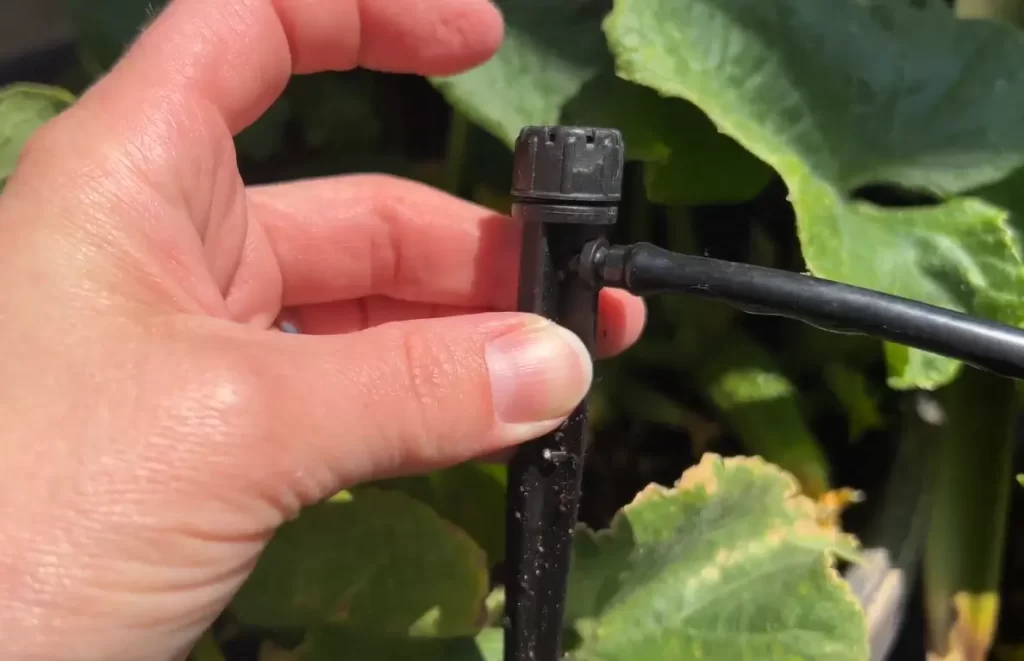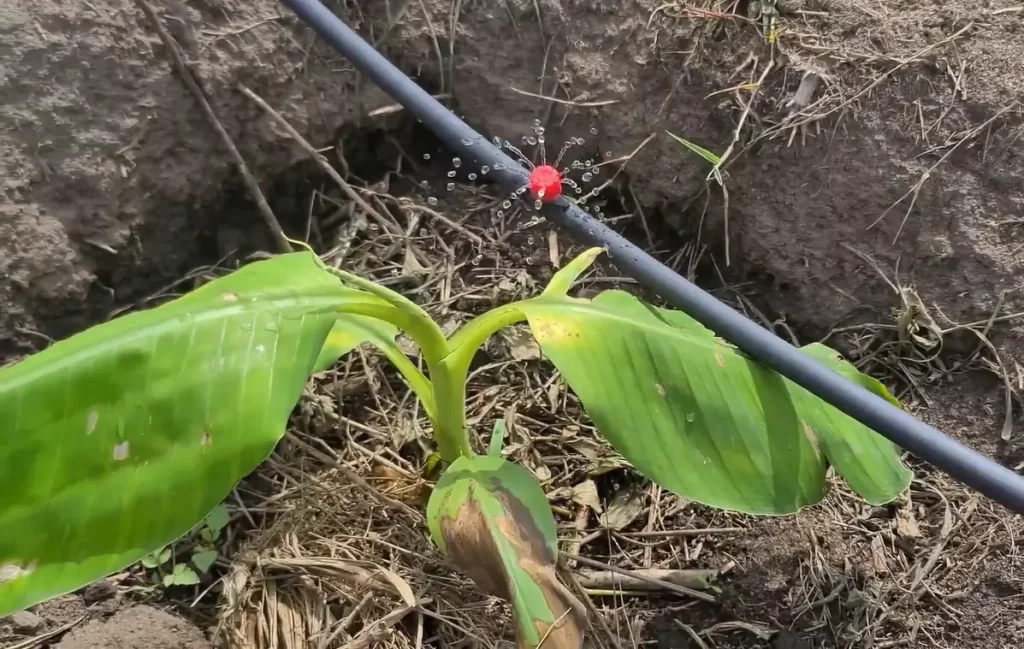How To Easily Increase Pressure In Drip Irrigation System: 6 Steps
Although drip irrigation is a very effective technique for watering plants, it can be annoying when the pressure is insufficient to adequately hydrate your plants. Low pressure can result in uneven water distribution and slow delivery, which can harm plant growth and cause water waste.
So, how to increase pressure in the drip irrigation system? To increase pressure in a drip irrigation system, you can use a larger diameter pipe for the main supply line, add more emitters, or add a booster pump.
Don’t you understand how you can do that? Then read the entire content. Here you’ll find a comprehensive guide on several ways to increase pressure in your drip irrigation system.
Understanding Pressure in Drip Irrigation System
A drip irrigation system is an efficient way to provide water to crops by delivering small amounts of water directly to the roots of plants through tubing and emitters. Water pressure is needed to operate a drip irrigation system, which can be controlled using a pressure regulator.
The system’s flow rate and pressure loss can be affected by the type of emitters used and the length and diameter of the tubing. The cost of a drip irrigation system varies depending on the size of the field and the type of system used.
The uniformity of water application and the volume of water delivered can also affect crop yields. Maintaining the system by checking for leaks and cleaning the emitters regularly is important. Proper soil moisture is crucial for crop growth and should be monitored to avoid overwatering or under watering.
How To Increase Pressure In Drip Irrigation System
Low water pressure can affect the effectiveness of a drip irrigation system, leading to uneven water distribution and decreased crop yields. Here, we will discuss how to increase the pressure in a drip irrigation system to ensure optimal crop growth.

1. Check the Water Pressure
The first step in increasing the pressure in a drip irrigation system is to check the water pressure from the water supply. You can easily do that using a water pressure gauge, which can be attached to a hose bib. The pressure should be between 20-25 psi for a drip irrigation system to work effectively. If the pressure is lower, you may need to install a booster pump to increase the water pressure.
2. Check for Leaks
Before increasing the pressure in a drip irrigation system, check for leaks. Leaks can cause a loss of pressure, reducing the system’s effectiveness. Check all the tubing, fittings, and emitters for leaks and replace faulty components.
3. Install a Pressure Regulator
A pressure regulator is a device that can be installed in a drip irrigation system to regulate water pressure. It can help maintain constant pressure regardless of fluctuations in the water supply. Pressure regulators come in various sizes, so choose the right one for your system. Installing a pressure regulator can also help to reduce the risk of damage to the system due to high water pressure.
4. Check the Flow Rate
The flow rate is the amount of water that is delivered to the crop per unit time. If the flow rate is too low, the crop may not receive enough water, while a high flow rate can lead to soil waterlogging. Check the flow rate of your system using a flow meter and adjust it as necessary. You can easily do that by adjusting the flow control valve on the drip irrigation system.
5. Increase the Diameter of the Tubing
The diameter of the tubing in a drip irrigation system can affect the water pressure. Increasing the diameter of the tubing can help to increase the water pressure. However, this will also increase the cost of the system. It is important to strike a balance between cost and effectiveness when increasing the diameter of the tubing.
6. Minimize Pressure Loss
Pressure loss can occur due to friction between the water and the tubing walls. To minimize pressure loss, use smooth-walled tubing instead of corrugated tubing. You can also reduce the length of the tubing, minimize the number of fittings, and use larger diameter tubing to reduce pressure loss.
Causes of Low Pressure in Drip Irrigation System

Drip irrigation systems efficiently irrigate crops, gardens, and landscapes. However, low pressure can affect the uniformity and effectiveness of water application, reducing crop yields and increasing maintenance costs. Here are some causes of low pressure in drip irrigation systems:
Water Supply and Water Pressure
One of the most common causes of low pressure is an inadequate water supply or insufficient water pressure. Insufficient water supply may result in low flow rates, while inadequate water pressure can lead to pressure loss throughout the system.
Pressure Regulator
A malfunctioning pressure regulator can also cause low pressure in drip irrigation systems. The pressure regulator is responsible for maintaining consistent pressure throughout the system, and if it is not functioning correctly, the pressure may be too low.
Emitters and Tubing
Another cause of low pressure can be emitters and tubing. Clogging in the emitter or tubing can reduce water flow and cause low pressure. Emitters may also be damaged, which can cause water to leak out before it reaches the crop.
Valve
A valve that is not fully open can also cause low pressure. It is essential to check valves regularly to ensure they are operating correctly.
Cost
In some cases, low pressure can be attributed to the cost of the drip irrigation system. Low-cost systems may not be designed to withstand the pressures required for efficient water application.
Maintenance
Finally, proper maintenance is essential to prevent low pressure in drip irrigation systems. Regular cleaning of emitters, filters, and tubing can help ensure the system functions correctly.
Factors Affecting Drip Irrigation System Pressure
Pressure is a critical factor in drip irrigation systems as it affects the flow rate and water application uniformity. Several factors can affect the pressure in drip irrigation systems, which are discussed below.
1. Water Supply
The amount and quality of water supplied to the drip irrigation system can affect its pressure. If the water supply is insufficient, the pressure in the system will decrease. Additionally, the quality of the water can cause clogging of the emitters, resulting in increased pressure loss.
2. Tubing and Emitter Type
The type and size of tubing and emitters used in the drip irrigation system can also affect the pressure. The length and diameter of the tubing can cause pressure loss due to friction. The type of emitter used can also affect the pressure as conventional emitters require higher pressure than low-pressure emitters.
3. Pressure Regulator
A pressure regulator is an essential component of drip irrigation systems as it maintains a constant pressure in the system. A malfunctioning or incorrectly adjusted pressure regulator can result in pressure loss, affecting the uniformity of water application.
4. Soil Type
The soil type can also affect the pressure in the drip irrigation system. Sandy soils have low water holding capacity, requiring higher application rates and pressure to compensate for the water lost due to infiltration.
5. Operating Pressure Range
Drip irrigation systems are designed to operate within a specific pressure range. Operating outside this range can affect the flow rate and uniformity of water application. The pressure range depends on the type of emitters used in the system.
6. Crop Type
Different crops have different water requirements, and the number of emitters required per crop varies accordingly. Using the wrong number of emitters can cause pressure loss or overpressure, affecting crop yields.
Final Thoughts
From now on you should know how to increase pressure in drip irrigation system after reading the entire guide. As you’ve seen, it can be done by adjusting the pressure regulator, increasing the pump size and decreasing the pipe size, reducing the number of lateral lines, and increasing the elevation of the pump.
All of these methods can be used to increase the pressure in the drip irrigation system and ensure efficient irrigation. Overall, increasing pressure in the drip irrigation system is essential for effective irrigation and can be done using the methods mentioned above.
